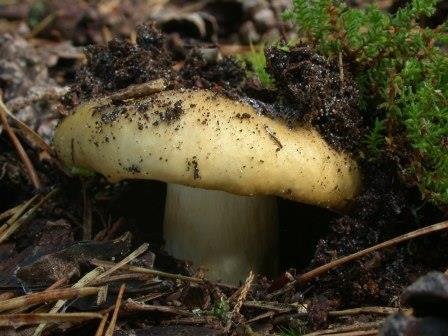Ochre brittlegill
As the name Ochre Brittlegill (Russula ochroleuca) implies, this mushroom has brittle gills, but also the entire fruiting body is quite fragile and has a crumbly consistency because it belongs to a genus which had a separate evolutionary line to other fungi.
They can easily be seen growing in any New Forest woodland which has a mixture of trees on acid soil. There is also a similar related species which is a much brighter yellow, growing in wetter boggy areas of woods, often with Spaghnum moss. Russulas are fruiting and at their best in late summer to late autumn, and are very common and widespread.
The gills underneath the cap are very brittle indeed and readily crumble like flaked almonds when handled. There is, however, one related species that has soft greasy gills and even smells of crab. The stem is about 7cm long, white or cream becoming greyish, and being brittle, will easily break like a stick of chalk, because it is composed of round cells.
An older name for the Ochre Brittlegill was Common Yellow Russula. The entire genus is often known as the ‘Roses of the Woods’ because of their large assortment of colours with varying shades of green, pink, red, orange, purple, brown and cream. They even have a variety of smells such as geranium, stewed apple, cheese, oil, crab, menthol and antiseptic. But colours and smells are not necessarily a great help with identification; Russulas are notoriously difficult.
The fruiting bodies are often eaten by slugs and snails, mice and invertebrates – and deer are fond on them too – one seldom sees a pristine unnibbled one. However, it seems that gut enzymes can stimulate the germination of spores – so all is not lost – the prime object of fruiting is being achieved.


